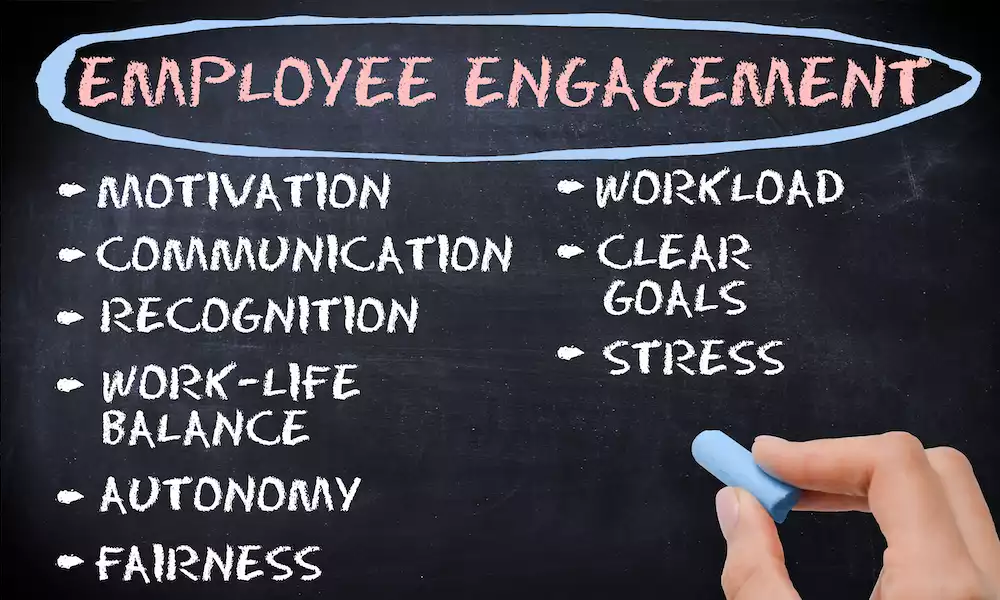General
10 Actions For Higher Employee Engagement

Do you want to know how employee engagement can energize the journey to operational excellence in your business? Then read on.
It’s no secret that a more engaged workforce leads to happier customers, increased operational excellence, and higher profits. The reason is straightforward: Employees who are fully involved in and enthusiastic about their work and workplace are more likely to exceed expectations. But what can you do to engage your people more?
10 Employee Engagement Actions
Employee engagement is vital to the competitiveness of any organization, particularly in the current business climate.
However, increasing employee engagement in the workplace can be tricky, and the following 10 actions will help establish and nurture this critical value.
1. Drive engagement top-down
Employee engagement needs a clear vision from leadership to inspire and motivate.
A good example is a 1960s anecdote from President John F. Kennedy’s visit to the NASA space center. He stopped briefly to interact with a janitor who proudly proclaimed that he had helped put a man on the moon during the tour. Fictional or not, the story exemplifies the inspiring force originating from an ambitious yet actionable goal.
2. Empower your people at all levels
Engagement requires companies to develop and pay attention to all employee levels beyond looking after their well-being and plotting a career path.
Incredible things can happen if the type of belief and attitude of the NASA janitor could rub off on your entire team.
3. Appoint the right people in management
While leadership drives the vision, line management delivers it at the localized and granular organizational levels. There’s a strong link between employees’ trust in their direct line manager and their engagement across the broader company.
4. Transform the recruitment approach
With skilled talent in high demand, organizations and companies must provide an excellent candidate experience during the hiring process.
Overarching megatrends fragment the modern talent landscape across the world – with changing demographic patterns caused by urbanization, the reshaping age structure of the employment pool, and increasing mobility being the most prominent.
As a result, workplace boundaries are becoming more supple, and flexible work options, such as remote working, may form part of an innovative and rewarding talent paradigm.
As an enabler of agility, flexibility should therefore be an option worth considering. Many functions forced to work remotely because of the coronavirus pandemic have proven they can do it successfully.
5. Infuse a culture of commitment to operational excellence
Accountability should be built into the business lexicon so that daily actions match identified goals. This instills a sense of urgency and passion, which sets the tone for operational excellence.
Capable managers should be entrusted to achieve ambitious stretch performance targets embedded in the company’s purpose and autonomy to achieve the objectives.
6. Make meaningful communication a priority
A lack of communication, especially around change initiatives, is a significant cause of negativity in the workplace. Ongoing, meaningful communication helps instill an organizational culture and generates a sense of community and teamwork. This is a crucial requirement for linking daily routines to broader objectives.
7. Invest in and promote a compelling employee value proposition
Employee engagement requires consistently promoting and communicating the organization’s activities and successes, reinforcing its vision and mission.
Google, for example, can be described as the leader in employment branding. The multinational is well known for its exceptional approach to employees and for building a strong employee value proposition.
Google receives about 3 million resumés yearly, selecting only 7,000 new employees. This, together with attractive benefits, campus-style workspace, and swift leaders, contributes to a brand that attracts top talent.
8. Manage perceived job insecurity caused by technology
Technological changes often trigger uncertainty at work, and there’s a real risk that it can overwhelm employees, mainly if seen as task overload. An “always-on” connectedness can, ironically, seed disconnectedness from work or cause distraction.
Combined with other forces, such as the global pandemic, and economic and political uncertainty, it will most likely increase the number of disaffected and only sporadically committed employees.
Awareness and alleviation of these factors will properly utilize technology’s role to facilitate employee engagement through increased networking, collaboration, and innovation.
9. Benchmark fundamentals and take appropriate action
Benchmarking the primary engagement measure is critical, but be sure to track the fundamental tenets. Focus on engagement metrics that strongly influence business outcomes, such as staff turnover in mission-critical functions like R&D, instead of in the overall company.
The most important outcome may be to take appropriate, urgent, and transparent actions so that management is seen to prioritize engagement issues. At the same time, it will meet employee expectations of improved engagement.
10. A critical organizational asset
Talent management is pivotal to engagement, and organizations are starting to realize the significance of unlocking the further potential within their talent pools. How their workforce is shaped and energized will determine its future.
A committed, participative workforce is a critical organizational asset that reaps competitive advantage, adds to the bottom line, and significantly contributes to operational excellence.
Download the how-to guide on driving employee engagement on the CI journey for more practical methods to boost employee engagement.









